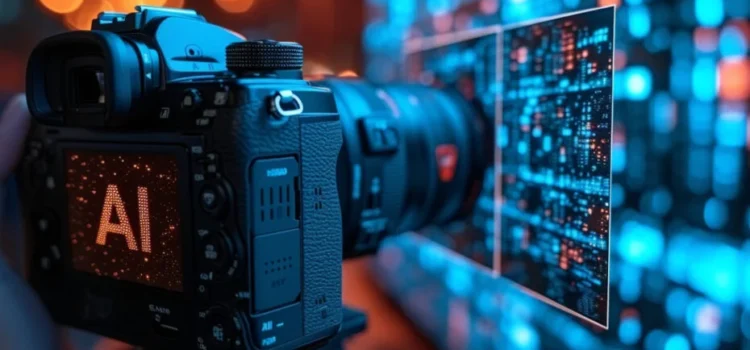In today’s fast-paced digital age, creators, marketers and everyday users are constantly looking for innovative ways to enhance their visual content. The rapid evolution of artificial intelligence (AI) has brought revolutionary changes to the way we interact with photos and videos, making tasks that once required hours of manual work achievable in seconds. Among the latest breakthroughs are tools like the AI Clothes Changer and Talking Photo, which are redefining digital creativity in unprecedented ways.
The Rise of AI in Visual Content Creation
Over the past few years, AI-powered tools have become mainstream in the fields of photography and video production. From facial recognition to automated color grading, AI is now deeply embedded in both professional and consumer-level editing platforms.
These tools use machine learning algorithms to analyze, interpret and manipulate images and video with remarkable accuracy. What once took a team of editors and designers can now be achieved with a few clicks, enabling even novices to create professional-grade content.
AI Clothes Changer: A Game-Changer for Fashion and Content Creation
One of the most exciting innovations in the AI photo editing space is the AI Clothes Changer. As the name suggests, this tool allows users to digitally change outfits in a photograph without needing to reshoot or manually edit clothing details. It works by analyzing the person’s body posture, shape and lighting, then overlaying new apparel seamlessly onto the original image.
Applications of AI Clothes Changer:
- Fashion E-commerce: Retailers can showcase multiple outfits on the same model without scheduling multiple photo shoots, saving time and cost.
- Social Media Influencers: Content creators can experiment with various styles and aesthetics to match their personal brand.
- Virtual Try-Ons: Users can visualize how they would look in different clothes before making a purchase, enhancing the online shopping experience.
- Cosplay and Creative Projects: Designers can quickly test outfit ideas or bring fictional characters to life.
The AI Clothes Changer not only simplifies the editing process but also adds a new dimension of creativity. It empowers users to tell visual stories that would be difficult or expensive to create otherwise.
Bringing Still Images to Life: The Magic of Talking Photo
While changing clothes in a photo is remarkable, animating a still image to make it “speak” is even more astonishing. That’s where Talking Photo tools come into play. These AI applications take a static portrait and animate it to simulate speech and facial expressions, often synced to an audio file or typed text.
The technology behind Talking Photo tools involves deep learning models that analyze facial landmarks and generate realistic lip movements, blinks and expressions. The end result is a surprisingly lifelike animation that can convey messages in a fun and engaging way.
Popular Uses of Talking Photo Technology:
- Education and E-learning: Teachers can create animated avatars for lectures, making learning more interactive.
- Marketing and Advertising: Brands can add personality to mascots or spokespeople in digital campaigns.
- Entertainment and Storytelling: Creators can bring historical figures or fictional characters to life with voice and expression.
- Memorialization: Families can animate old photos of loved ones, preserving memories in a unique and emotional format.
What makes the Talking Photo tool truly powerful is its accessibility. You no longer need advanced animation skills or expensive software to create lifelike speaking avatars. With the click of a button, anyone can breathe life into a still image.
Ethical Considerations in AI-Powered Visual Editing
As these tools gain popularity, it’s essential to address the ethical implications of AI in photo and video editing. Technologies like the AI Clothes Changer and Talking Photo are impressive, but they also raise questions about consent, authenticity and misinformation.
For example, altering someone’s clothing in a photo or making them speak without their approval can cross ethical boundaries, especially when used for malicious intent. That’s why it’s crucial for developers to implement safeguards and for users to exercise responsibility.
Clear labeling of AI-generated content, transparent usage policies and informed consent are critical to maintaining trust in digital media. When used responsibly, these tools can be a force for good, enhancing creativity and innovation.
The Future of AI in Visual Content Creation
As AI continues to advance, the possibilities for photo and video editing are virtually limitless. Future applications may include:
- Real-time AI video filters: Instantly apply makeup, hairstyles or clothing during live video streams.
- Hyper-personalized content: AI that understands user preferences to create tailored images and videos.
- AI directors: Tools that automatically generate short films or advertisements based on a script or prompt.
The creative industries from marketing and filmmaking to education and fashion are already being reshaped by these innovations. Tools like AI Clothes Changer and Talking Photo are not just novelties; they represent a paradigm shift in how we produce and interact with visual content.
Embracing the Creative Revolution
Whether you’re a seasoned digital artist or a casual social media user, AI-powered tools offer a new playground for imagination. The barrier to entry has been lowered, allowing more people to participate in the digital content revolution. No longer confined by technical expertise, users can focus on storytelling, creativity and personal expression.
For businesses, these tools offer powerful new ways to engage audiences, enhance product visualization and streamline content production. For individuals, they provide a means to explore new identities, animate memories and express themselves in previously impossible ways.
As we move further into the age of intelligent creativity, one thing is clear: AI is not replacing artists, it’s empowering them. By combining human imagination with machine precision, we’re entering a golden era of visual storytelling.
Final Thoughts
The integration of AI into visual content creation has democratized access to tools that were once exclusive to professionals. Innovations like the AI Clothes Changer and Talking Photo are just the beginning. With these technologies at our fingertips, the future of content creation looks more dynamic, engaging and inclusive than ever before.
Whether you’re editing your next viral TikTok, designing a new lookbook or creating educational content, AI is your creative companion helping turn visions into vivid, shareable realities.
FOR MORE INFORMATION VISIT OUR HOMEPAGE;




